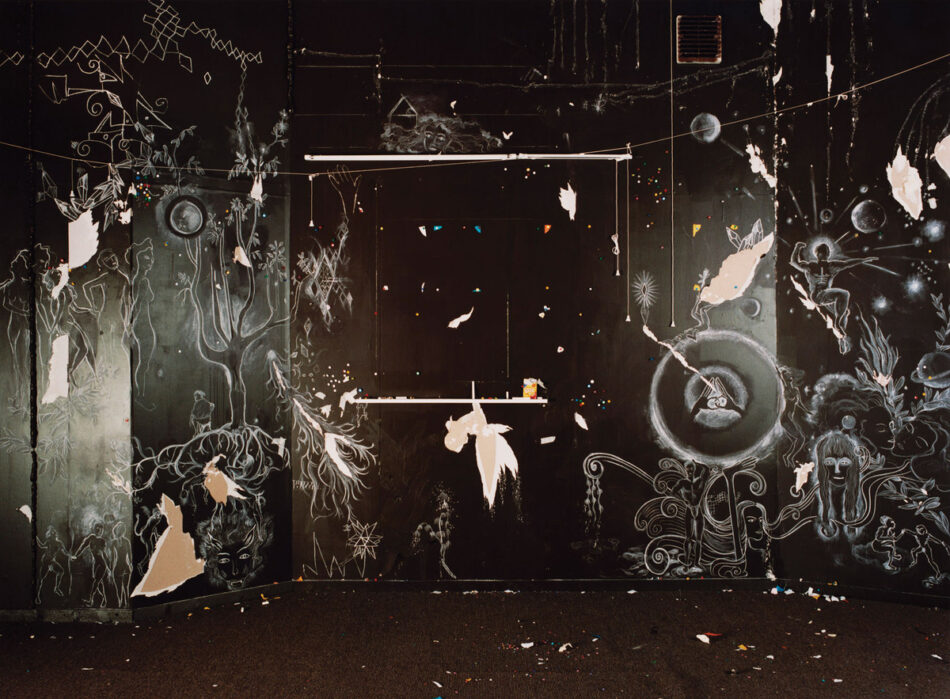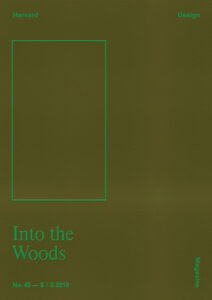Bewilderment
The woods can be “lovely, dark and deep” (per Robert Frost), but they can also be the site of horror and danger, depending upon the traveler who passes through. In a much-loved poem, Frost sings of the comfort of the woods that beckon with “easy wind and downy flake,” but even here the poem hints at dark secrets within. When it comes to songs about the woods, indeed, even seemingly innocent stories can seem sinister; take, for example, the childhood song “The Teddy Bearsí Picnic,” which cautions us to go to the picnic in disguise if we plan to catch the teddy bears “unawares.” Apart from the rather frightening cabal of teddy bears sitting around drinking tea, the song presents us with a cluster of curious children wearing masks and spying upon the scene. For every idyllic story of a little house in the woods, there are others telling of murderous activities (The Cabin in the Woods [2012], but also “Hansel and Gretel” [1812]). The woods harbor monsters and beckon to the world-weary. The woods are where we go to get lost—they are where we seek meaning, they are portals to heaven and to hell. Dante found himself in the dark woods on his way into the inferno, and a group of teenagers gets lost in the Massachusetts woods in The Blair Witch Project (1999). The woods are wild, they are the setting for countless horror films (including the queer/trans classic Sleepaway Camp [1983]), and they offer refuge to some but disorientation to others. Henry David Thoreau went into the woods to live “deliberately,” but others, Unabomber types, go to distance themselves from a world that bewilders them.
“Bewilderment” in its early usage meant getting lost in the woods. Writer Samuel Johnson, for example, described bewilderment thus: “To lose in pathless places, to confound for want of a plain road.” The term literally meant to lose someone or something or oneself in a wild place or in the woods, and it comes from the verb “wilder,” meaning to lose one’s way in the wild. Bewilderment probably shares in the kind of magical/delightful/scary forms of unknowing that we also associate with enchantment/bafflement/confusion. But it is more than just a synonym of these states of disorientation. Bewilderment suggests a becoming that moves in an opposite direction to colonial knowing, to navigation, to settling and conquering. In these early uses, bewilderment was about the not-knowing of terrain, and, as such, the term reminds us that travelers 300 or 400 years ago had regular experiences of being lost. Now, we understand bewilderment simply as the failure to understand.
But bewilderment has been taken up by thinkers and poets to access other forms of knowledge. Poet Fanny Howe, for example, in a beautiful essay titled “Bewilderment” (2003) describes the term as naming both “a poetics and an ethics.” She writes: “In the Dictionary, to bewilder is to cause to lose one’s sense of where one is.” And she continues: “The wilderness as metaphor . . . is more than getting lost in the woods. Bewilderment is an enchantment that follows a complete collapse of reference and reconcilability.” For Howe, bewilderment is a term she uses to create complex characters in her work, characters who are lost and unsure rather than all-knowing and certain. Howe, finally, locates bewilderment as an altered relation to the ordinary, which she terms “an explosion of parts, the quotidian smeared.”

This smudging of the ordinary that occurs in the woods unsettles the traveler. We are unsure where the woods begin and where they end, where we begin, where we end. And, of course, the woods are not a neutral space, equally welcoming or scary to all. While the woods have been conventionally a place where women should not go alone, they are also replete with racial terror. Poet Fred Moten in The Feel Trio (2014) describes multiple scenes of racial terror and counters them with images of fugitivity. He writes: “I ran from it and was still in it.” This construction whereby escape cannot deliver the racialized subject to freedom, however, (“I . . . was still in it”) does not imply the totality of capture. Running is important in Moten’s poetic universe, arrival less so. And as for Howe, the relationship to freedom, fugitivity, and capture are all also relations to language and naming.
We understand from Moten’s haunting scenes of fugitivity that for some, the woods may be dark and deep but they are not always lovely. In the racialized landscape of North America, the woods have harbored the dark secrets of lynching, and therefore still cannot represent refuge for many African Americans. In a haunting essay titled “Ecomelancholia: Slavery, War, and Black Ecological Imaginings” (2011), scholar Jennifer James argues that slavery and racial terror has, as she puts it, “attenuated African Americans’ connection to nature.” Recognizing that the relation to wilderness is fraught for Native Americans and African Americans, who have both been identified with the wild and punished there, James offers an understanding of racism that is terrain-based, geographic—racial zoning, in her terms. Describing the African American relation to the natural world as “dangerously broken,” James lists the multiple sources of trouble that lurk outside of urban areas, including the KKK, the memory of slavery, plantations, and so on. “Ecomelancholia,” accordingly, names an irresolvable relation to the so-called natural world that cannot be repressed or resolved.
The woods name and spatialize geographies of terror for some, refuge for others; they metaphorize disorientation and loss. The forest is the site of fairy tale and real monsters, teddy bears and racists, rapists and mountain men. But, in a world in which wild spaces are disappearing rapidly, the woods signify other forms of life, nonhuman life, vegetal life, that may represent a future absent of humans altogether. The woods remember a time without humans and possibly dream that such a time will come again.
Jack Halberstam is professor of English and gender studies at Columbia University. Halberstam’s research explores histories of gender variance, queer subcultures, and queer and feminist cultural production. Halberstam is the author of seven books, including The Queer Art of Failure (2011), and has a new book in progress titled Wild Things: Queerness after Nature.
